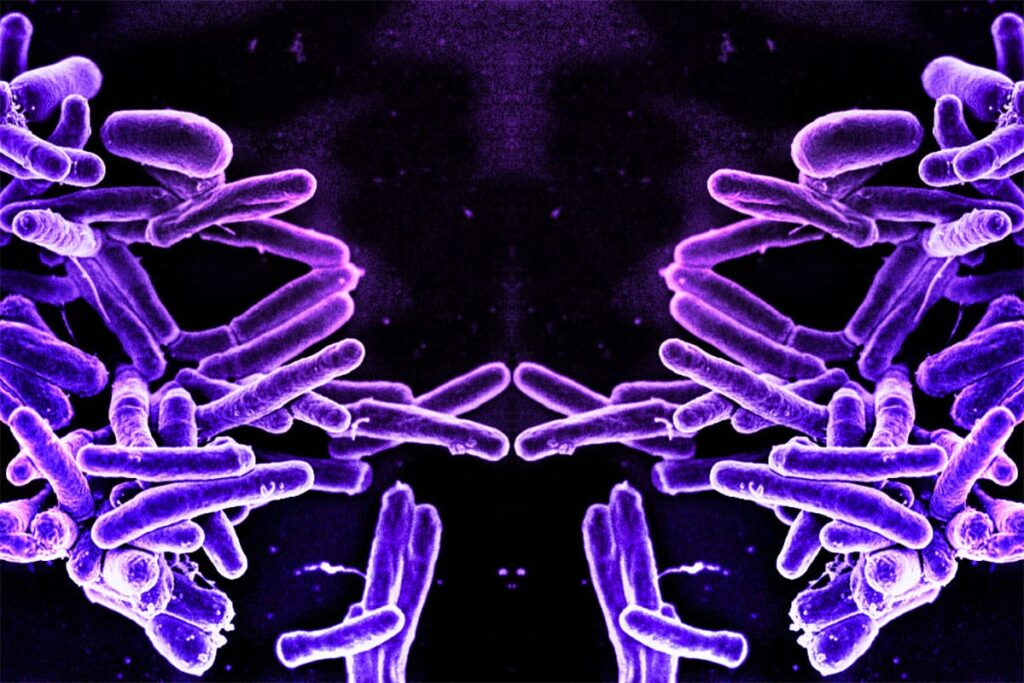
Mirror bacteria represent a fascinating concept in the realm of synthetic biology. These theoretical organisms would be composed of molecules that are mirror images of those found in natural life forms. The fundamental difference lies in their chirality – the spatial arrangement of atoms in molecules.
In nature, proteins are built from “left-handed” amino acids, while sugars adopt a “right-handed” configuration. Mirror bacteria would reverse this orientation, creating a life form that is fundamentally distinct from all known organisms. This inversion would render them invisible to natural immune systems and microbial predators, potentially granting them an unprecedented advantage in survival and propagation.
While no complete mirror organism exists yet, scientists have successfully synthesized individual mirror molecules for specific studies. The complexity of creating a fully functional mirror cell, however, remains a significant technical challenge. Researchers would need to overcome hurdles such as:
- Synthesizing mirror versions of complex biological structures like ribosomes
- Integrating these structures into a functional living system
- Ensuring the mirror organisms can replicate and sustain themselves
The potential applications of mirror molecules in medicine and industry are tantalizing. These synthetic compounds could revolutionize drug development, creating medications that resist enzymatic degradation and remain effective in the body for longer periods. In bioproduction, mirror molecules might offer contamination-resistant systems, enhancing industrial process efficiency.
Global scientific consensus: a call for caution and regulation
The theoretical nature of mirror bacteria hasn’t stopped scientists from raising alarm bells. A recent report published in Science, authored by 38 renowned researchers from nine countries, calls for an immediate moratorium on the development of mirror bacteria. This unprecedented collective stance underscores the gravity of the potential risks associated with these synthetic organisms.
The signatories, including Nobel laureates Greg Winter and Jack Szostak, along with experts in immunology, ecology, and bioethics, emphasize the need for a rigorous ethical and scientific framework to govern this research. They urge funding institutions to cease support for projects aimed at creating mirror bacteria until substantial evidence of their safety can be provided.
The concerns raised by these scientists are multifaceted:
- Ecological disruption: Mirror bacteria could potentially thrive in natural environments by exploiting non-chiral nutrients or modified molecules, leading to uncontrolled proliferation and ecosystem imbalances.
- Human health risks: Infections caused by mirror bacteria could be catastrophic due to the inability of antibodies to recognize their inverted targets, essentially inducing artificial immunodeficiency.
- Uncontrollable spread: The lack of natural predators or immune responses could allow mirror bacteria to spread rapidly and unpredictably.
While the report advocates for halting research on complete mirror organisms, it recognizes the value of continued study on individual mirror molecules for therapeutic and industrial applications. The challenge lies in striking a balance between scientific progress and responsible risk management.
Fostering global dialogue and establishing safeguards
The potential risks associated with mirror bacteria have catalyzed a call for worldwide action to regulate research in this field before it poses unmanageable threats. In response, a series of international conferences and meetings are scheduled for 2025, to be held at prestigious institutions such as the Institut Pasteur in Paris, the University of Manchester, and in Singapore.
These events aim to bring together scientists, policymakers, funding bodies, and civil society representatives to establish clear ethical standards and regulatory frameworks. The objective is to anticipate potential dangers while creating a space for dialogue on the benefits and limitations of this technology.
Patrick Cai, a professor of synthetic genomics at the University of Manchester, stated that these discussions offer a rare opportunity to act proactively, balancing scientific advancement with responsible risk management. This initiative also seeks to strengthen international cooperation, crucial for establishing a consensus on priorities and boundaries in synthetic biology research.
| Potential Benefits | Associated Risks |
|---|---|
| Novel therapeutic approaches | Uncontrollable ecological disruption |
| Enhanced bioproduction efficiency | Human health threats |
| Increased drug effectiveness | Rapid, unpredictable spread |
By establishing safeguards now, scientists hope to harness the potential benefits while preventing high-risk scenarios, ensuring a balanced and secure development of these technologies. This proactive approach mirrors efforts in other fields of genetic research, such as the study of Chernobyl’s mutant wolves and their cancer resistance, which demonstrates the importance of carefully managed scientific exploration.
Balancing innovation and caution in synthetic biology
The debate surrounding mirror bacteria research highlights the delicate balance between scientific innovation and responsible governance in the field of synthetic biology. As researchers push the boundaries of what’s possible, exemplified by achievements like creating living mice from pre-animal genes, the need for comprehensive ethical frameworks becomes increasingly apparent.
The scientific community must navigate the fine line between groundbreaking discoveries and potential catastrophic risks. Establishing robust international guidelines and oversight mechanisms is crucial to ensure that research in synthetic biology, including mirror bacteria studies, progresses safely and ethically.
As we contemplate the implications of creating new forms of life, it’s worth considering the broader context of biological manipulation. Projects like the resurrection of extinct carnivorous predators raise similar ethical questions and underscore the need for careful consideration of long-term consequences.
The global scientific community’s response to the challenges posed by mirror bacteria research serves as a model for addressing future dilemmas in synthetic biology. By fostering open dialogue, establishing clear guidelines, and prioritizing safety, we can harness the potential of these revolutionary technologies while safeguarding the delicate balance of life on Earth.
Got a reaction? Share your thoughts in the comments
Enjoyed this article? Subscribe to our free newsletter for engaging stories, exclusive content, and the latest news.







